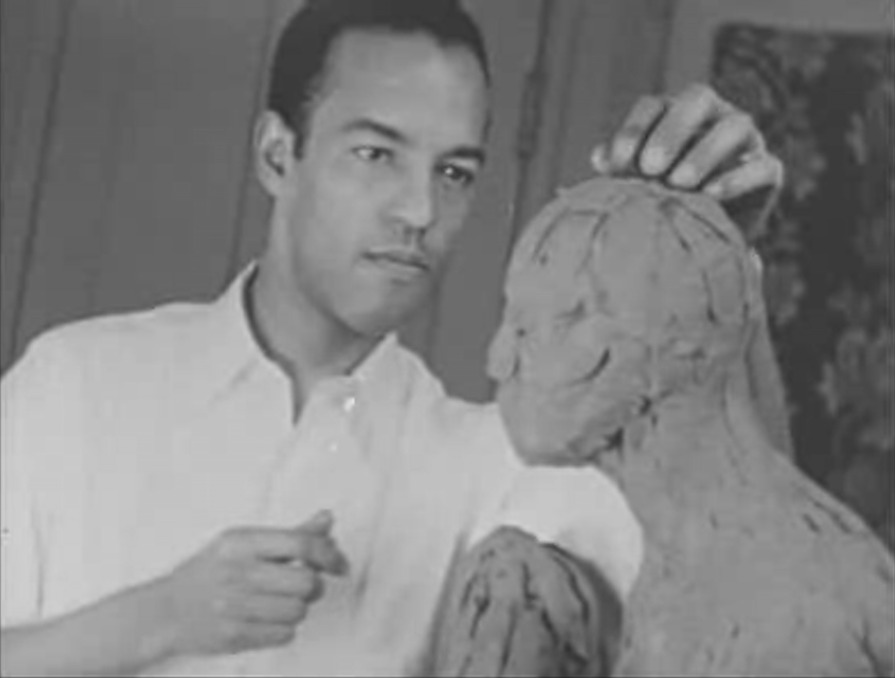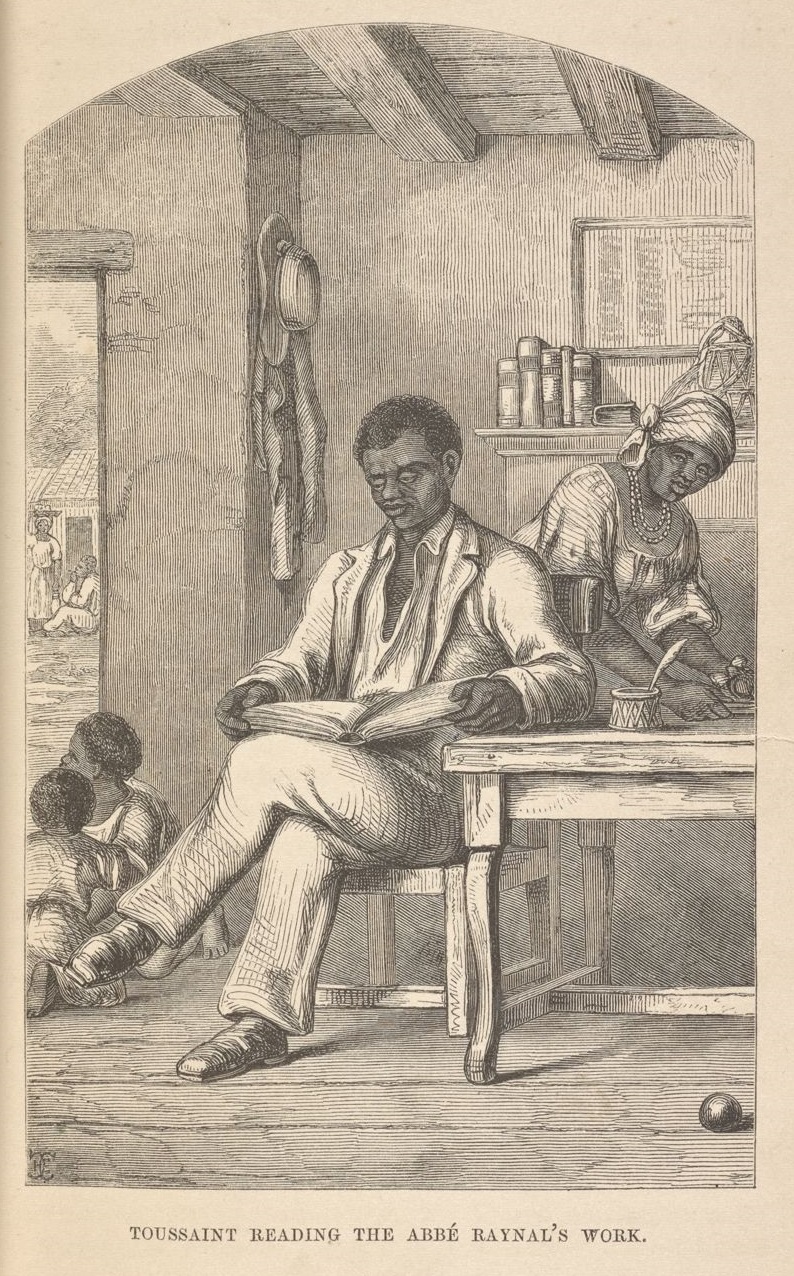|
Richmond Barthé
James Richmond Barthé, also known as Richmond Barthé (January 28, 1901 – March 5, 1989) was an African-American sculptor associated with the Harlem Renaissance. Barthé is best known for his portrayal of black subjects. The focus of his artistic work was portraying the diversity and spirituality of man. Barthé once said: "All my life I have been interested in trying to capture the spiritual quality I see and feel in people, and I feel that the human figure as God made it, is the best means of expressing this spirit in man." Early life James Richmond Barthé was born in Bay St. Louis, Mississippi to Richmond Barthé and Marie Clementine Robateau. Barthé's father died at age 22, when he was only a few months old, leaving his mother to raise him alone. She worked as a dressmaker and before Barthé began elementary school she remarried to William Franklin, with whom she eventually had five additional children.Lewis (2009) Barthé showed a passion and skill for drawing from an ... [...More Info...] [...Related Items...] OR: [Wikipedia] [Google] [Baidu] |
A Study Of Negro Artists
''A Study of Negro Artists'' is a silent film in black and white on four reels that was created in the 1930s to highlight the development of African-American fine arts. The film features many influential black artists associated with the Harlem Renaissance. The 37-minute motion picture was made by Jules V. D. Bucher. Funding The project was funded by the Harmon Foundation and screened at the New York Public Library to raise funds to save the Harlem Art Workshop. In creating ''A Study of Negro Artists'', the Harmon Foundation hoped to educate the American public about the rich African-American arts scene developing in New York City. Significance The film is an example of the New Negro Arts movement associated with the Harlem Renaissance. It also exemplifies the tendency to segregate artistic achievement according to perceived racial differences. Art critic John Ott has suggested that efforts by the Harmon Foundation of this kind "eclipses African American artistic endeavors ... [...More Info...] [...Related Items...] OR: [Wikipedia] [Google] [Baidu] |
Toussaint L’Ouverture
François-Dominique Toussaint Louverture (; also known as Toussaint L'Ouverture or Toussaint Bréda; 20 May 1743 – 7 April 1803) was a Haitian general and the most prominent leader of the Haitian Revolution. During his life, Louverture first fought against the French, then for them, and then finally against France again for the cause of Haitian independence. As a revolutionary leader, Louverture displayed military and political acumen that helped transform the fledgling slave rebellion into a revolutionary movement. Louverture is now known as the "Father of Haiti". Louverture was born enslaved on the French colony of Saint-Domingue, now known as Haiti. He was a devout Catholic who became a freeman before the revolution and, once freed, identified as a Frenchman for the greater part of his life. During his time as a freeman he attempted to climb the highly stratified social ladder on the island, combatting racism whilst gaining and losing much wealth while working as a p ... [...More Info...] [...Related Items...] OR: [Wikipedia] [Google] [Baidu] |
Century Of Progress
A Century of Progress International Exposition, also known as the Chicago World's Fair, was a world's fair held in the city of Chicago, Illinois, United States, from 1933 to 1934. The fair, registered under the Bureau International des Expositions (BIE), celebrated the city's centennial. The theme of the fair was technological innovation, and its motto was "Science Finds, Industry Applies, Man Adapts", trumpeting the message that science and American life were wedded. Its architectural symbol was the Sky Ride, a transporter bridge perpendicular to the shore on which one could ride from one side of the fair to the other. One description of the fair noted that the world, "then still mired in the malaise of the Great Depression, could glimpse a happier not-too-distant future, all driven by innovation in science and technology." Fair visitors saw the latest wonders in rail travel, automobiles, architecture and even cigarette-smoking robots. The exposition "emphasized technology a ... [...More Info...] [...Related Items...] OR: [Wikipedia] [Google] [Baidu] |
Rockefeller Center
Rockefeller Center is a large complex consisting of 19 commerce, commercial buildings covering between 48th Street (Manhattan), 48th Street and 51st Street (Manhattan), 51st Street in Midtown Manhattan, New York City. The 14 original Art Deco buildings, commissioned by the Rockefeller family, span the area between Fifth Avenue and Sixth Avenue (Manhattan), Sixth Avenue, split by a large sunken square and a private street called Rockefeller Plaza. Later additions include 75 Rockefeller Plaza across 51st Street at the north end of Rockefeller Plaza, and four International Style (architecture), International Style buildings on the west side of Sixth Avenue. In 1928, the site's then-owner, Columbia University, leased the land to John D. Rockefeller Jr., who was the main person behind the complex's construction. Originally envisioned as the site for a new Metropolitan Opera building, the current Rockefeller Center came about after the Met could not afford to move to the proposed new ... [...More Info...] [...Related Items...] OR: [Wikipedia] [Google] [Baidu] |
Hamlet
''The Tragedy of Hamlet, Prince of Denmark'', often shortened to ''Hamlet'' (), is a tragedy written by William Shakespeare sometime between 1599 and 1601. It is Shakespeare's longest play, with 29,551 words. Set in Denmark, the play depicts Prince Hamlet and his attempts to exact revenge against his uncle, Claudius, who has murdered Hamlet's father in order to seize his throne and marry Hamlet's mother. ''Hamlet'' is considered among the "most powerful and influential tragedies in the English language", with a story capable of "seemingly endless retelling and adaptation by others". There are many works that have been pointed to as possible sources for Shakespeare's play—from ancient Greek tragedies to Elizabethan plays. The editors of the Arden Shakespeare question the idea of "source hunting", pointing out that it presupposes that authors always require ideas from other works for their own, and suggests that no author can have an original idea or be an originator. Wh ... [...More Info...] [...Related Items...] OR: [Wikipedia] [Google] [Baidu] |




